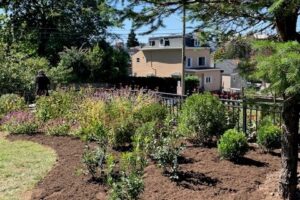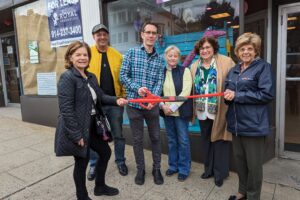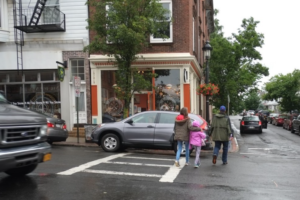In the NYS Thruway Authority’s Alternatives Analysis report, nine of fifteen studied alternatives for a new Hudson River crossing were eliminated. A tunnel option was among those excluded.
Both the Westchester and Rockland County branches of the Concerned Citizens For Responsible Development believe that the eleven reasons given for the tunnel elimination were flawed.
Experts with worldwide tunnel experience have offered ample evidence of a more efficient and less costly solution for the construction problem. CCRD has petitioned the NYS Department of Transportation to demonstrate their claim of having a "transparent process" by allowing these experts to dialogue with their own experts to arrive at a solution all can embrace.
Some debatable reasons for elimination of the tunnel option were that it:
(1) would be more costly to build than a new bridge, (2) take longer to construct, (3) cause greater disruption of the Hudson River bottom, (4) lead to more land-taking than a bridge, (5) would create longer and steeper grades that exceed highway standards, (6) would cause serious dredging extraction problems, and (7) would bypass three Interchanges.
Four of the civic planning issues that need to be addressed are: (1) Cost, (2) Environmental impacts, (3) Eminent Domain, and (4) Timeliness for replacing the current bridge.
(1 ) FINANCIAL COST — Latest official cost estimate for a new bridge and associated systems runs up to $14.5 billion dollars! By its estimated completion time in 2016 or beyond, actual costs for that new bridge could soar to $20 billion … or more. Taxpayers and commuters will be faced with handling this staggering financial burden. Tax increases will almost certainly result.
One alternative for remedying the cost problem is to examine model programs in other states. The NYS Legislature would need to study and enact a public-private partnership (PPP) Act for major, extremely costly regional development projects. This option is currently available in at least six states resulting in the creation of needed civil projects at significant dollar savings. In collaboration with the states, developers have successfully designed, built, operated and maintained projects over an agreed term, (i.e., 30 years) with scheduled reversion back to public ownership.
( 2 ) ENVIRONMENTAL IMPACTS — The respected environmental watchdog, Riverkeeper, has endorsed the "Renovate-No Build" option for a new Hudson River crossing. It cited the critical need to maintain improving river conditions and concluded that construction of a new and larger bridge would damage the river environment.
A renovated TZB, carrying only car traffic, would reduce the daily wear and tear on the new crossing, lower annual maintenance costs and, minus truck traffic, produce an estimated 30% gain in vehicular capacity. Such a newer, safer span in the same space as the current bridge would retain all highway Interchanges.
Further, combining a renovated TZB with a dedicated truck-mass transit tunnel (i.e., two 50-foot diameter tubes) would provide an extended safety margin against possible terror threats along the I-287 corridor.
(3) EMINENT DOMAIN — The NYS Thruway Authority has suggested that there would be greater need for land-taking and more displacement of homes and businesses under a tunnel option. This has been challenged by outside experts. Until careful documentation by both bridge and tunnel experts can be compared, that claim should be considered tentative and possibly untrue.
(4) TIMELINESS — Present TZB proposals envision a timeline for approval and construction extending out to 2016. Some construction experts have warned that, even if the new decking is started promptly, the current bridge may not have another ten years of service under the increasing load conditions it has to manage. Major tunnels worldwide are being completed at rates of 100 feet per day, or 350 days for the 35,000 feet (nearly 7 miles) from West Nyack to Elmsford.
Taxpayers and drivers need to hear authoritative reports from both sides of the crossing issue to be able to balance the contrasting arguments.
Sherwood B. Chorost, Ph.D., President, Concerned Citizens For Responsible Development Westchester Branch






